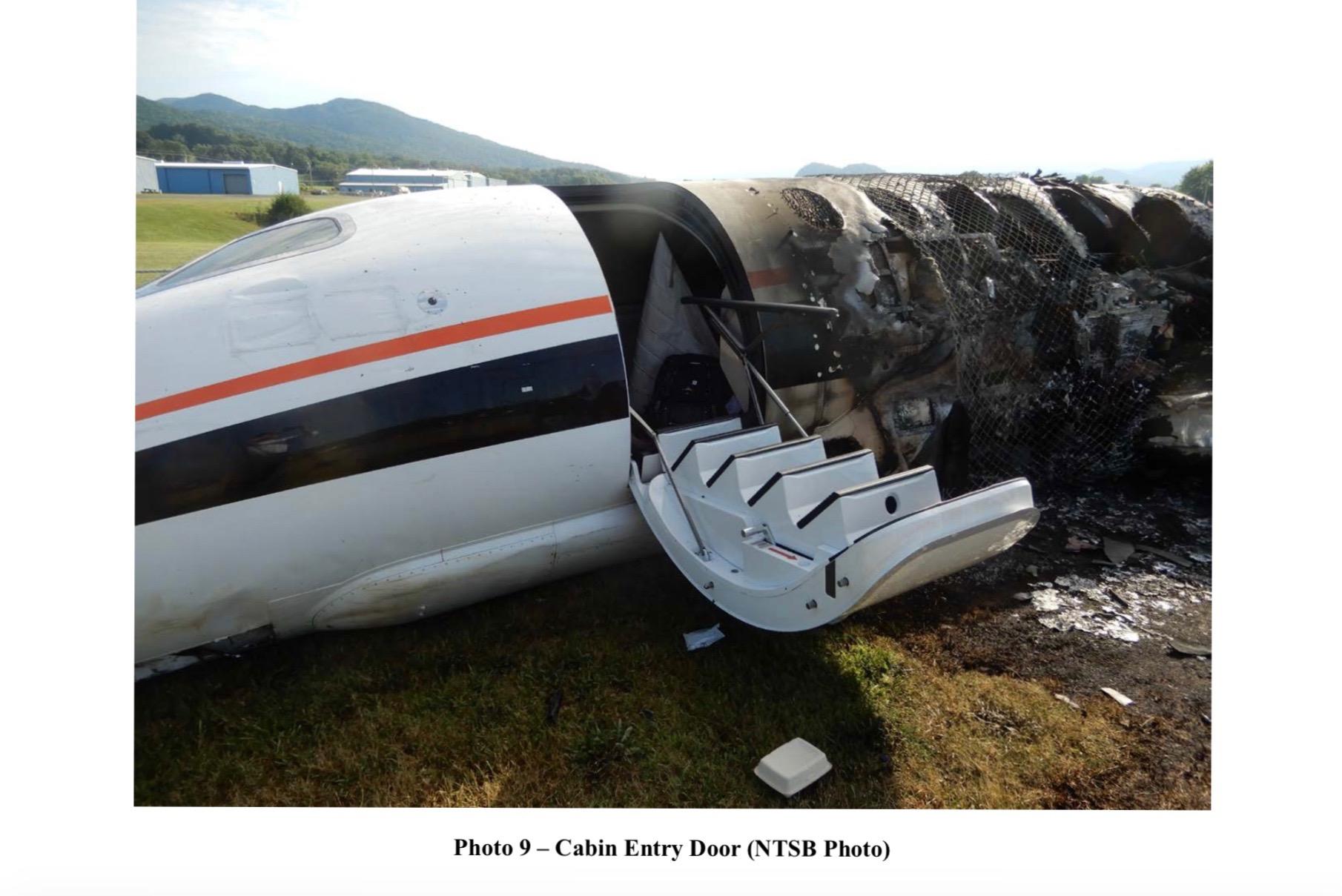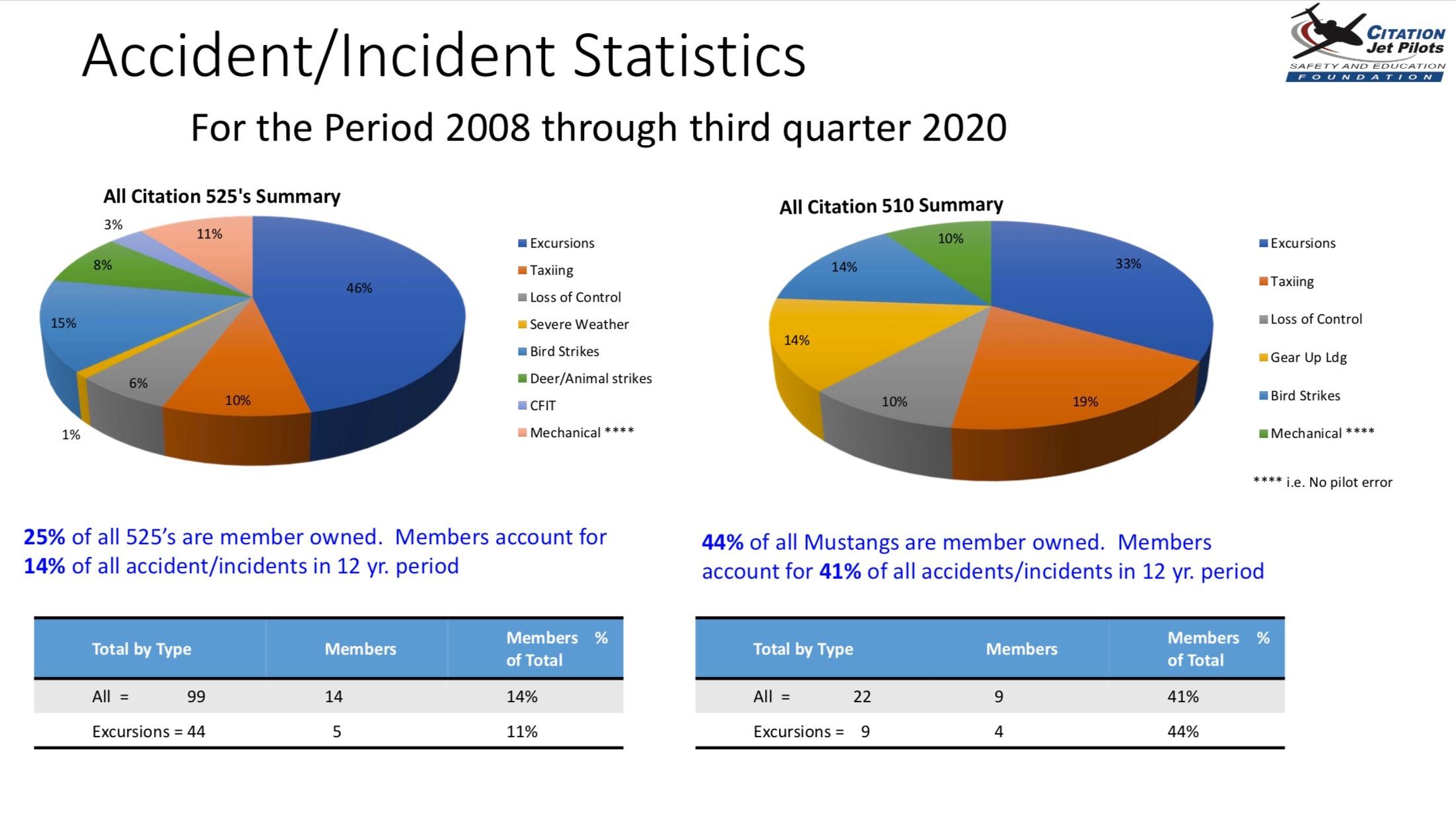
Safety experts say that more insight is needed into pilot decision-making on whether or not to execute a go-around on final approach, a maneuver designed to prevent approach and landing accidents that pilots too often ignore. They advocate separating go-around and stable approach criteria.
The knowledge gap is specific to business aviation, says Presage Group CEO Martin Smith. “Presage over the last several years has collected about a million data points on pilot decision-making on the approach and landing phase of flight on the commercial side,” Smith shared during a webinar hosted by aviation safety and training company Wyvern. “For the corporate and business side, we have collected zero data points. We have no intelligence on the human decision-making through this critically important phase of flight.”
The March 17 webinar was an occasion to discuss a new study of go-around decision-making that Wyvern and Presage are launching with the Citation Jet Pilots (CJP) association. Speakers described the project as a first-of-its-kind study for single-pilot operations.
Flight Safety Foundation findings
Approach and landing is the most common phase of flight for aviation accidents, accounting annually for about 65% of all accidents, according to the Flight Safety Foundation (FSF). A foundation study of 16 years of runway excursions found that 83% of excursions—or 54% of all accidents—potentially could have been prevented with a decision to go around.
While “it is generally felt” that an unstable approach is the primary cause of landing excursions, just over half of the excursions during the study period followed a fully stable approach; in these instances, the flight became unstable only during landing, according to the foundation.
The study found that industry adherence to go-arounds as a maneuver to help prevent approach and landing accidents (ALAs) is poor; only about 3% of unstable approaches result in go-around policy compliance.
The FSF launched the Go-Around Decision-Making and Execution Project to answer the question: “Why are we so poor at complying with established go-around policies?” It released a final report, based on research conducted by Presage Group, in March 2017.
The FSF report made the following significant findings:
- The collective industry norm is to accept the noncompliance of go-around policies, despite empirical data that indicate this is the most common contributor to ALAs.
- The industry predominantly turns to reducing unstable approaches as the sole means to reduce ALAs, even though empirical data show that unstable approaches affect less than half of runway excursions.
- Pilots' overall awareness of ALA risks and the impact those risks have on approach and landing safety is low.
- Management is generally disengaged from go-around noncompliance and has low awareness of the impact it has on ALAs. Management’s perception of risk is low.
- Pilots do not see current go-around policy criteria as realistic to the operational environment.
- Effective go-around decision-making in flightdeck communication is low.
- Go-arounds, although considered a normal flight maneuver, are rare.
- As reported by flight crews, one in 10 go-arounds has a potentially hazardous outcome, such as an aircraft performance exceedance.
- There are variable go-around techniques and challenges, many of which procedures and training do not adequately address.
- Pilot experience in the aircraft type affects go-around proficiency.
- Go-around complexity, including complex controller radio transmissions, can affect go-around proficiency.
Among recommendations, operators should ensure that a go-around policy makes sense operationally by updating the stable approach definition and stable approach height “to maximize their relevance among flight crews, and their manageability among management,” the report said. They should “separate the stable approach definition and criteria from decision-making criteria to improve awareness that these are two distinct aspects of go-around policies, and that decision-making is viable beyond the defined approach phase.”
Cessna Citation Latitude Runway Excursion
During the Wyvern webinar, former astronaut Charlie Precourt, who is chairman of the CJP Safety and Education Foundation safety committee, described the Aug. 15, 2019 runway excursion of a 680A Cessna Citation Latitude carrying retired race car driver Dale Earnhardt and his family as a case study in “non-decision-making” by the pilots. The twin-engine business jet overran Runway 24 at Elizabethton Municipal Airport (0A9) in Bristol, Tennessee, went through a fence, caught fire and came to rest on the edge of a highway 600 ft. beyond the runway threshold. Three of the five people on board had minor injuries but all survived.
In September 2020, the NTSB made the following probable cause finding: “The pilot’s continuation of an unstabilized approach despite recognizing associated cues and the flight crew’s decision not to initiate a go-around before touchdown, which resulted in a bounced landing, a loss of airplane control, a landing gear collapse, and a runway excursion. Contributing to the accident was the pilot’s failure to deploy the speedbrakes during the initial touchdown, which may have prevented the runway excursion, and the pilot’s attempt to go around after deployment of the thrust reversers.”
“They were unstable on six out of seven parameters, but in [the pilot’s] mind he wasn’t because he thought he could save it,” said Precourt. “With the compliance of unstable approaches leading to go-arounds only 3% of the time, it’s pretty obvious that pilots don’t view that criteria as credible or real. We all go into this [thinking] ‘I can fix this.’ Probably the last time a lot of us did a go-around was when we did our first solo in a Cessna 150 and botched our first one for nervousness and then fixed it and came back and did another one. It is something that gets moved to the back of your mind.”
Business Aviation Go-Around Study

The CJP, Wyvern and Presage are collaborating on a go-around decision-making study that Precourt said is a first of its kind for single-pilot operations. The expectation is that it will lead to updated standard operating procedures.
The CJP has 1,306 members who operate 838 Cessna Citation 525 light, 510 Mustang very light and other Citation jets.
“We’re really excited about the Presage study so we can get some go-around criteria that complement and add to the stable approach criteria, the kind of [guidance] that our members and pilots will buy into,” said Precourt, who presented accident statistics for Citation 510 and 525 models. “For us at the Citation Jet Pilots association, we made it a priority because over 50% of our incidents have an origin in excursions. It’s our number-one nemesis.”
Safety performance goals of the research are to:
- Improve go-around and compliance rates
- Improve stable approach rates at 1,000 ft. and 500 ft. target altitudes
- Reduce unstable approaches
- Decrease risk of runway excursions
- Decrease numbers of deep landings, hard landings and tail strikes
- Reduce direct and indirect costs
- Improve compliance to go-around execution policy
- Improve overall risk profile of flight operations





